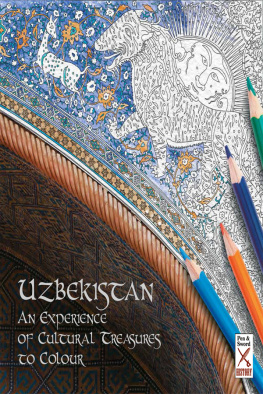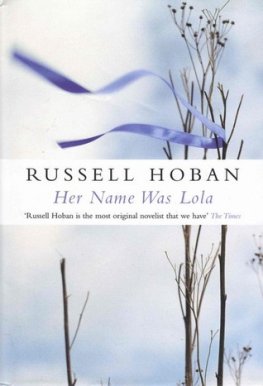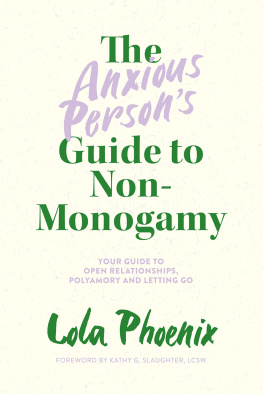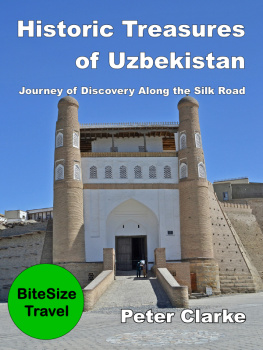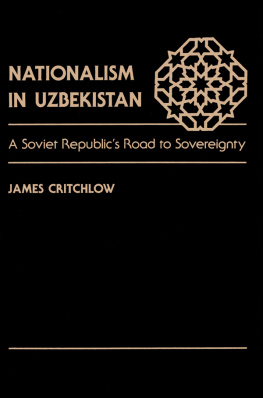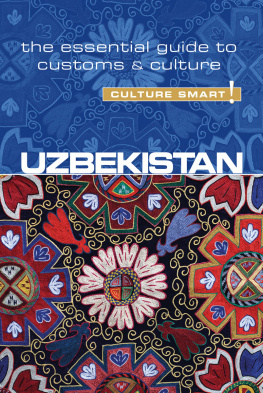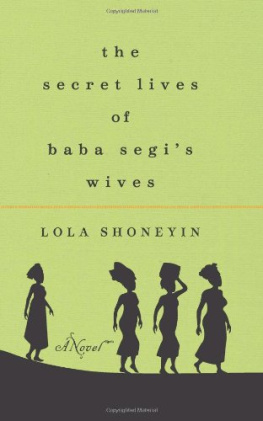We would like to extend our thanks to the following people, without whose help this publication would not have been possible: |
L OLA K ARIMOVA -T ILLYAEVA , Uzbekistans Ambassador to UNESCO; B OBUR I SMAILOV , Member of the Creative Association of the Academy of Arts of Uzbekistan; B INAFSHA N ODIR , art critic and Member of the Creative Association of the Academy of Arts of Uzbekistan; D AVRON T OSHEV , Artist and miniaturist; | A RTUR K ONOVALOV , Photographer; V IKTOR S ATTAROV , Layout designer; Designers A NNA V EDENEYEVA , T IMUR M IKHEYEV , B UNYOD K ENZHAYEV , G ALINA K ALCHENKO ; Translator C AROL E RMAKOVA , MA. |
We are also indebted to the Alisher Navoi National Library of Uzbekistan and the Kamoliddin Behzod National Institute of Fine Arts and Design for information provided. |
UZBEKISTAN: AN EXPERIENCE OF CULTURAL TREASURES TO COLOUR.
AUGUST, 2017. FIRST PRINTING.
2017The Harmonist, Inc. ALL Rights Reserved. 9220 West Sunset BLvd, Suite 320, West HoLLywood, CA 90069.
Islam Karimov Foundation, 2017.
Sanat, 2017.
Web & Social Media:
LOLAKARIMOVA.COM
facebook.com/lola.karimova.tillyaeva
instaoram.com/lola_tillyaeva
ISBN: 9781526750204
eISBN: 9781526723550
Mobi ISBN: 9781526723574
W ith its rich and unique traditions, Uzbekistan well deserves the epithet cradle of civilization. Through the ages, a wealth of nations has passed through its territory, leaving a cultural legacy that has evolved over many centuries. The particular topological and climatic conditions found in the vast valley between the Amu Darya and Syr Darya rivers made this region ideally suited to early farming settlements, which then paved the way for larger states of the ancient world such as Bactria, Sogd and Horezm.
Ancient Uzbekistan was a melting pot of cultures; neighbouring nations from the Eastern Steppe, Siberia, Mesopotamia, Iran, India and China all added their distinctiveness to its developing artistic traditions.
With time, the rich cultural exchange expedited by the Silk Road carried the culture, science and art of this region farther afield, to Western civilizations.
But it was here, on the territory of modern-day Uzbekistan, that one of the most important centres for the exact sciences came into being. Great thinkers such as Ahmad-al-Farghani (Alfraganus), Avicenna, Al-Farabi, Al-Biruni and Mirso Ulugbek made significant contributions to science and culture, ensuring a stimulating academic environment flourished here throughout the Middle Ages.
Cities such as Bukhara, Samarkand, Termez, Khiva, Tashkent, Fergana, Kokand, Shahrisabz and Andizhan were soon renowned throughout medieval Central Asia as prominent hubs for culture, art and science.
The peoples living on the territory of modern-day Uzbekistan had an open and adaptive approach to art, readily absorbing new features while maintaining their own particular style, and it is this overlap of influences which is, perhaps, one of the most distinguishing features of the regions vibrant tradition. For instance, this underlying continuity runs through the development of the regions distinctive painting style, where it is visible at every stage from the rock art of Zarautsai to the magnificent murals of early medieval Afrasiab and Varakhsh, from the classic miniatures of the Timurid Dynasty to the original works of modern artists.
Uzbek artistic talent shines through in the masters fine appreciation of colour and hue, maturing over the centuries and reflected in fine art as well as applied traditions. Indeed, natural talent has combined with skill and experience to create a rich visual tradition that finds expression in Uzbekistans paintings as well as its mixed mediums and applied art: colourfully glazed ceramics and sumptuously bright, exquisitely ornamented textiles, including carpets, fabrics, embroidery, heeltaps and so on.
This stunningly rich range of colours is particularly evident in fragments of architectural decor in maiolica, ganch and wood.
We hope that the mesmerizing patterns and colours contained in the impressive examples of Uzbekistans national art in this publication will lead the reader to a deeper appreciation of the fine skills and creative thinking running through all forms of Uzbek art and shared by artists past and present.
Forged through the ages, the strikingly expressive art of this region has bequeathed to the world a wealth of wonderful creations, true works of art. The accomplishments in architecture, urban development, crafts and fine art are widely recognized as an important contribution to world heritage.
We hope that this publication will act as both a gateway to a broader understanding of these stunning accomplishments and as a tribute to the history and cultural legacy of all the peoples, past and present, who make up our country, Uzbekistan.
L OLA K ARIMOVA -T ILLYAEVA ,
Permanent Delegate of Uzbekistan
to UNESCO

